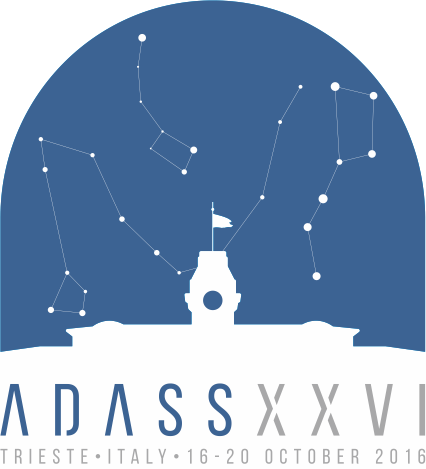Geers Vincent C.
Contact
- Position:
- STFC UK Astronomy Technology Centre, Edinburgh
- Address
- United Kingdom
Miscellaneous Information
- Miscellaneous Information
-
Abstract Reference: 30934
Identifier: P1.14
Presentation: Poster presentation
Key Theme: 1 Reduction and Analysis Algorithms for Large Databases and Vice-versa
The ALMA Science PipelineAuthors:
Geers Vincent C., Williams Stewart J., Muders Dirk, Wyrowski Friedrich, Kosugi George, Nakazato Takeshi, Kanako Sugimoto, Davis Lindsey, Hales Christopher A., Kent Brian, Kern JeffThe ALMA Science Pipeline is the automated data reduction software for the Atacama Large Millimeter/submillimeter Array (ALMA). It is developed as part of the Common Astronomy Software Applications (CASA) software package by an international consortium of scientists and software developers based at the National Radio Astronomical Observatory (NRAO), the European Southern Observatory (ESO), and the National Astronomical Observatory of Japan (NAOJ). The CASA Pipeline is designed to support ALMA and Very Large Array (VLA) interferometric data, as well as single dish data from ALMA. The Pipeline comprises (1) ""heuristics"" in the form of Python scripts that select the best processing parameters and call the underlying CASA data reduction tasks (written in C++), (2) ""contexts"" that are used for the book-keeping purpose of data processes, and (3) a ""weblog"" generator that showcase the outcome of each calibration / imaging task for users to view in a browser. The ALMA interferometric calibration pipeline was accepted for Science Operations since Cycle 2 (mid-2014), followed by single-dish data end-to-end acceptance in 2015. The ALMA Pipeline was publicly released to the science community in October 2014. At the Joint ALMA Observatory, the ALMA Pipeline is used for data reduction and Quality Assurance of PI observing programs taken in standard observing modes. It has considerably reduced the workload on manual processing, with about 17% of pipeline processed projects immediately ready for delivery to PIs, and a further ~70% requiring only manually added flagging. Recent Pipeline releases in 2015/2016 have added new functionality such as parallelized processing of the pre-imaging calibration steps and the automated imaging of the calibrator targets. The upcoming Cycle 4 release (Oct 2016) will introduce support for science target imaging. In this poster, we report on the current status of the Pipeline capabilities and present initial results from the Imaging Pipeline.



